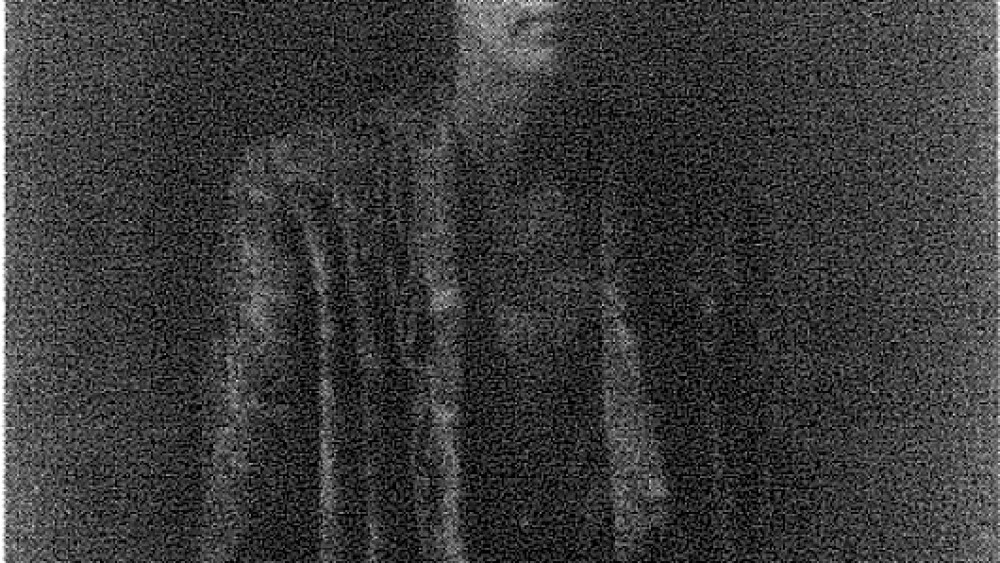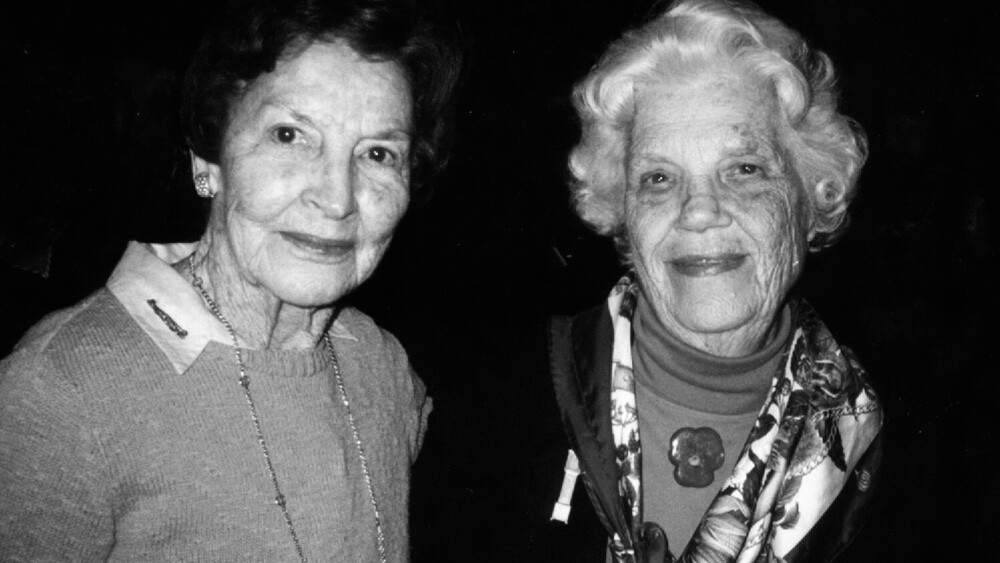In honor of Women’s History Month + all of the game-changing ladies of the past, the Preservation Society of Charleston’s Board Chair Betsy Kirkland Cahill has highlighted six Charleston women who made notable impacts in Charleston’s historic preservation.
Susan Pringle Frost (1873-1960) – Galvanizing Action
Outspoken, unafraid, and unconventional, Susan Pringle Frost was the driving force behind the creation of the historic preservation movement. She was an ardent proponent of women’s suffrage and was among those who successfully lobbied the College of Charleston to admit women in 1918. Susan was also the first woman in Charleston to drive a car, to have a business on Broad St., and to work as a professional realtor.
In April 1920, she convened a group of concerned citizens in the drawing room of 20 South Battery, where they discussed their mission of saving the Manigault House, which was threatened with demolition. This brought about the “Society for the Preservation of Old Dwellings,” known today as the Preservation Society of Charleston.
“Miss Sue,” as she was called, understood the intimate connection between the smallest detail – a balcony, a shutter, a flagstone – and the well-being of an entire neighborhood. She advocated ceaselessly for both, writing hundreds of letters to the newspaper, peppering city officials with questions and concerns, and pushing politicians to enact the first historic preservation ordinance in the country – one that has since been widely emulated. Many times she willingly sacrificed her commission if it meant that a house would be purchased by a family that would love and protect it.
In her conviction, her utter dedication, and her zeal, Susan Pringle Frost set the Preservation Society on the course it has followed for the past century.
Nell Pringle (1879-1937) – Putting it on the Line
Nell Pringle is the unsung hero of historic preservation in Charleston. A cousin of Sue Frost, she hosted the April 21, 1920 meeting that galvanized action to save the Manigault House.
She was duly elected First Vice President (and promptly volunteered her banker husband Ernest as Treasurer). At the request of “Cousin Sue,” she and Ernest underwrote the purchase of the Manigault House at a time when resources were scarce throughout Charleston.
She carried the burden for years, largely unsupported by the nascent Society that she had helped found. Selling the family’s bank stock, opening the Manigault House for fundraising teas, and coming up with any means she could, Nell Pringle eventually made the heart-rending decision to sell the garden and the gatehouse to Esso Standard Oil in order to make the mortgage payments; but she subsequently wrote and telephoned John D. Rockefeller imploring him to preserve the gatehouse (which he did, by installing public toilets).
When the loan was called in 1932 for $52,000 (the equivalent of nearly $900,000 today), the Pringles were unable to meet the obligation. Within a few years, a private donor purchased the house and donated it to the Charleston Museum, which retains ownership today.
One of the most spectacular mansions still standing in Charleston, the Manigault House owes its survival to the commitment of Nell Pringle, at a crucial moment, to put everything on the line. Her daughter, Eleanor Pringle Hart — longtime editor of Preservation Progress — once wrote that the Manigault House “is always a monument to my Mother. She loved and suffered so much for it.”
Nell Pringle’s admirable willingness to risk her own resources, and her perseverance in the face of great hardship, essentially kept the young preservation movement alive at a crucial juncture.
Elizabeth O’Neill Verner (1883-1979) – Creating and Preserving
“She saw the beauty in an ancient roof line, in an historic gate post, an old window pediment,” wrote the editor of “Preservation Progress” in 1971 — and she shared that beauty with the world through her etchings and pastels, paintings and sketches.
Elizabeth O’Neill Verner, artist, is inseparable from Elizabeth O’Neill Verner, preservationist. Present at the fateful April 21, 1920 meeting and a charter member of the Society for the Preservation of Old Dwellings, Mrs. Verner was constantly alert to any threats to her “subjects,” namely the inimitable buildings, streetscapes, and neighborhoods of her beloved Charleston.
She did not miss an opportunity to communicate the importance of preserving them to the outside world — writing letters, giving lectures, attending a fundraising rally in her wheelchair when she was in her 90s to donate an etching of a series of threatened warehouses on East Bay Street. Both in her art and in her preservation work, she recognized that it was not only – or not even – the grandest and most historic buildings that constitute Charleston’s unique character; rather, it was the buildings and neighborhoods that housed the people who lived and breathed and worked throughout the city.
A student of Charleston artist Alice Ravenel Huger Smith, Mrs. Verner also studied in Philadelphia, London, and Kyoto. She hoped that her legacy would be “to make people really care for the buildings they live in.” Her elegant and atmospheric depictions of Charleston’s ambiance and character went hand in hand with her understanding that they were endangered by the pressures of “progress” and exploitation.
In her sensitivity to what makes Charleston unique, her skill at bringing it alive through her art, and her commitment to preserving it through her actions, she was a singularly effective representative of the preservation movement.
Dorothy Haskell Porcher Legge (1895-2000) – Restoring and Recruiting
Dorothy Haskell Porcher Legge – the “Great Persuader,” as a PSC president dubbed her – worked alongside Susan Pringle Frost in the 1920s and 1930s to restore decaying historic dwellings on the peninsula.
Her initial forays were the eighteenth-century Blake Tenement House at 2 Courthouse Square and 22 Lamboll Street, which she and her husband Lionel Legge – a justice of the State Supreme Court – successively restored and resided in with their two young daughters.
In 1924, she found her piece de resistance in the Colonel Othniel Beale House at 99-101 East Bay. The neighborhood that is now one of the gems of Charleston was at the time in an almost unimaginable state of disrepair and neglect. Into this neighborhood the Legges moved, impervious to the pronouncements of their fellow Charlestonians.
Taking in stride the street fights on Saturday nights and the shrimp nets hung out of upper windows to dry, Mrs. Legge set to work. She decided to cheer up the neighborhood by painting the exterior a soft peach, thus giving rise to the array of pastel properties now known as Rainbow Row – a nickname she herself disliked. Mrs. Legge subsequently persuaded two other couples to invest in neighboring houses — and the renaissance of the area was underway.
She went on to be involved in many other preservation projects in the Lowcountry — including blocking a crane that was on the brink of demolishing the Christopher Gadsden House at 329 East Bay and persuading the city to lower the property taxes so the owner could afford to keep it — and was a founding board member of the Historic Charleston Foundation in 1947.
Her entire life was a testimonial to the preservation movement. But her proudest accomplishment — “my real monument,” she said — was the recovery and restoration of a pair of lanterns outside Hibernian Hall that had disappeared after the 1886 earthquake.
Determined, devoted, and highly persuasive, Dorothy Legge was an exemplar of good preservation in action.
Liz Young (1919-2012) + Jane Thornhill (1925-2019) – Twin Forces of Nature
The one was feisty and fearless; the other was brave and spirited. As individuals, they were formidable; as a duo they were unstoppable.
Elizabeth Jenkins Young and Jane Lucas Thornhill — Liz and Jane — were the first (Liz) and second (Jane) licensed tour guides in the city. They were the 25th (Liz) and 26th (Jane) Presidents of the Preservation Society, serving successive two-year terms from 1968-1972.
In 1971, arm in arm, they marched up to the campus of their alma mater, the College of Charleston, and faced down a bulldozer that was preparing to demolish the 19th-century Wagener House — and they subsequently made sure that the college’s president, Ted Stern, provided the necessary protection for historic architectural resources on campus.
Each had the courage of her convictions and would not be denied: Jane insisted that the Society invest in the purchase of 147 King, where its offices stand to this day; Liz was the unofficial and frequently-consulted conscience of the BAR (famously opposing her own son’s renovation plans).
Their service to the Preservation Society was extensive and legendary: at various times, each of them ran the membership committee, the publicity committee, the markers and awards committee (their method of selecting award winners was to cruise around town in Liz’s 1987 green Oldsmobile convertible picking out houses).
“Whenever anyone has a question concerning the Preservation Society,” wrote one of Liz’s colleagues in 1965, “the standard advice is, ‘Call Liz.’” Jane summed up their modus operandi this way: “We were always out to save buildings. Because once those things are all gone, you can’t put them back.”
Jane, with Liz not far behind, was a leader in the fight to prevent the James Island Connector from terminating in Broad Street. They rallied in 1974 to protect a series of warehouses slated for demolition around Lodge Alley. Each received the Susan Pringle Frost Award for lifetime achievement in preservation, 10 years apart.
Tenacious and candid, devoted and energetic, they have left a legacy of extraordinary commitment to the work of preservation in Charleston.
Tomorrow’s Preservationists – Standing Up for Charleston
Sue Frost started the movement. Nell Pringle gave everything she had to save the Manigault House. Dorothy Legge worked her restoration magic throughout the Lowcountry. Elizabeth O’Neill Verner painted preservation onto the national canvas. Liz Young and Jane Thornhill re-defined what it meant to be preservation leaders in Charleston. All women, all pioneers, each in her own way. Each, too, collaborated with and enjoyed the support of many men.
Sue Frost befriended contractors who alerted her to mantels or ironwork that she could retrieve from the trash heaps of Charleston; Mayor Burnet Maybank forgave some of her preservation-related debts. Nell Pringle’s husband, Ernest, wrote poignantly, “When my wife came to me, and gently said she wanted to risk something . . . for Charleston, and its preservation, but would hold her hand [back] if I objected, what would I say, who loved both her and Charleston?” Dorothy Legge’s husband Lionel was an enthusiastic partner in her projects, and she worked ably with Charleston’s business community – then mostly male – throughout her life. The work of preservation needs many hands, many voices.
Now, as then, there is so much at stake that all of us need to pitch in. The focus of the preservation movement in Charleston has grown and deepened over the decades, extending to the protection of neighborhood character and livability in a larger, more complex and more diverse city.
But the spirit that has animated the Preservation Society from the moment of its founding — the feeling that there is something special here that deserves to be safeguarded — is as strong as it ever was.
As we begin our second century, we invite you to join the cause and stand up for Charleston, just as the Preservation Society has been doing since 1920.



















